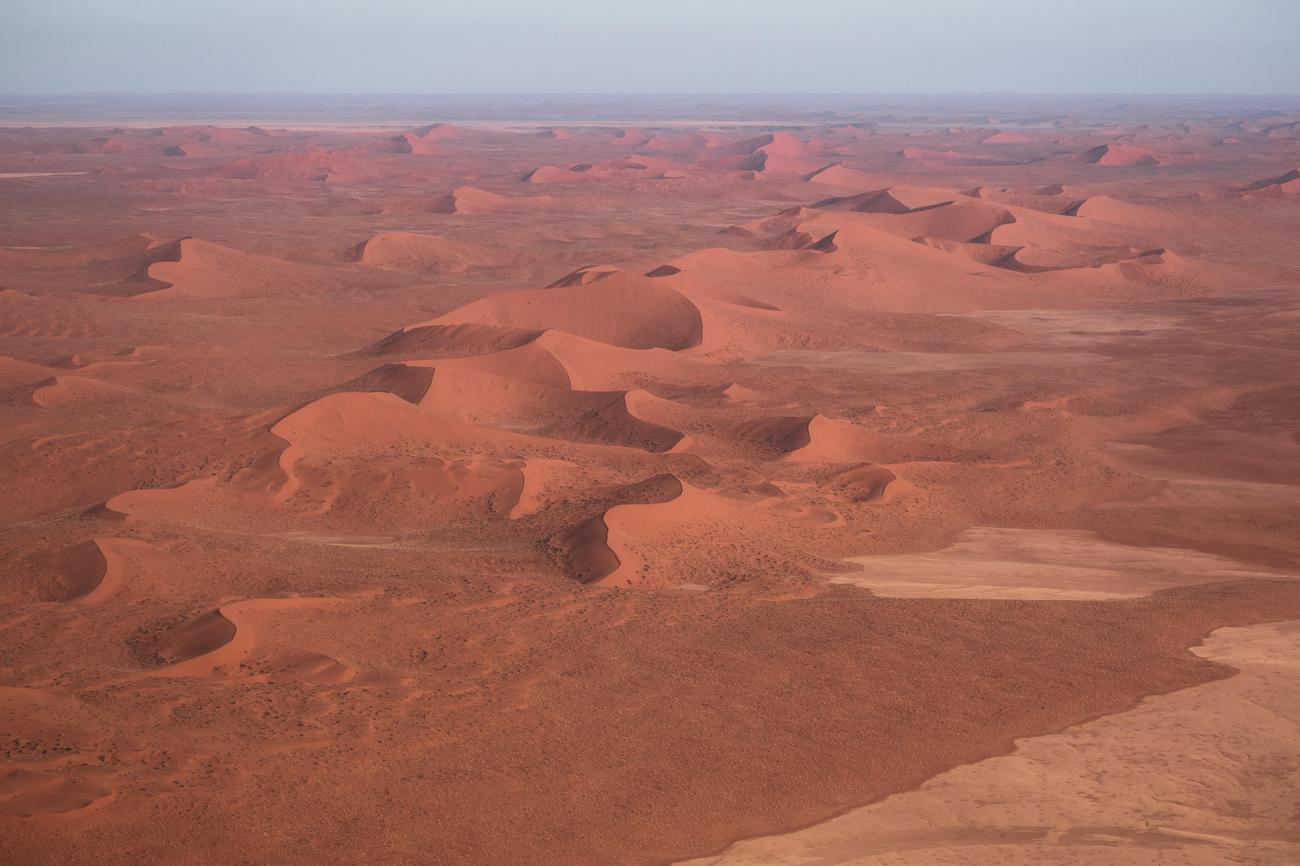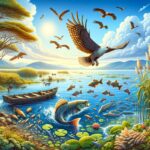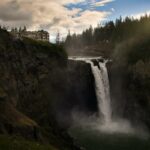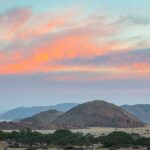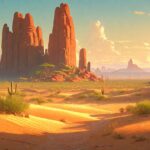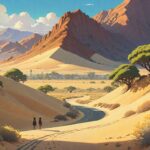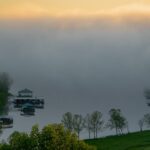Discover Fascinating Namibia: 10 Intriguing Facts
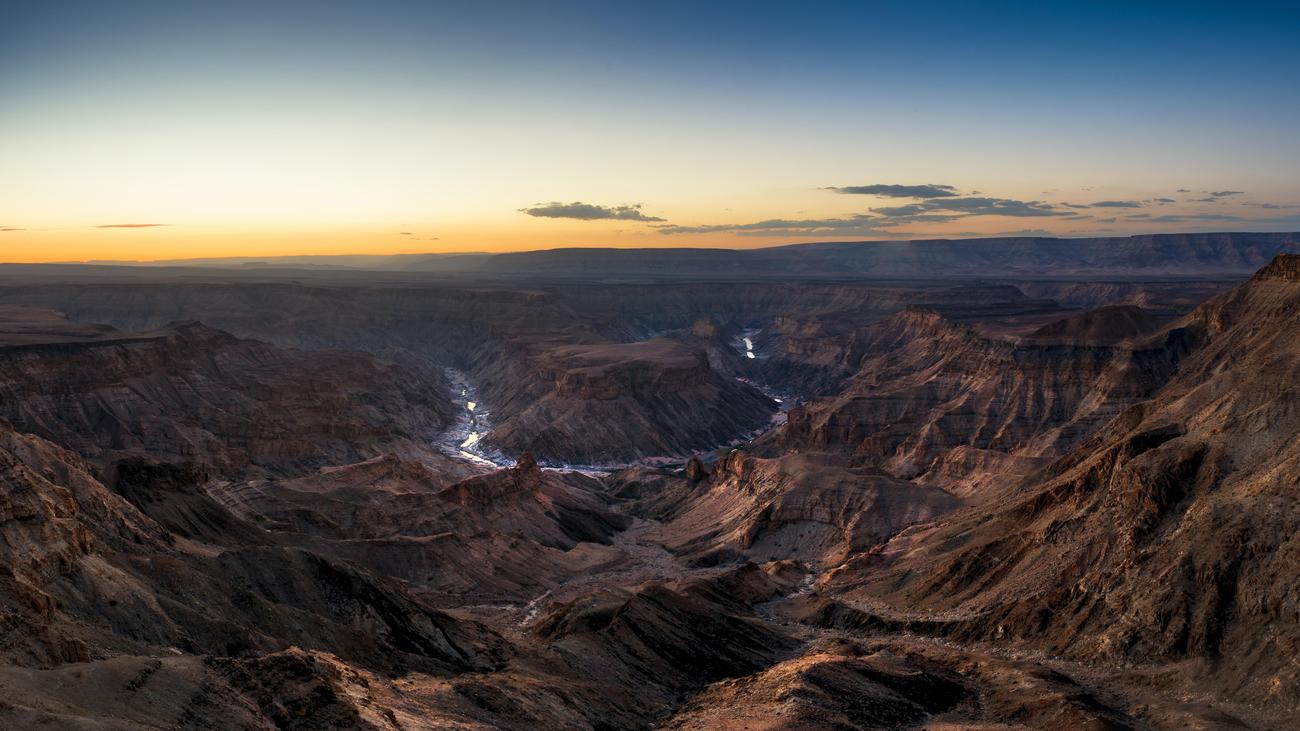
Welcome to the captivating world of Namibia, a country that holds an abundance of secrets waiting to be unraveled. As we embark on this journey, prepare to be astounded by the wonders that this land has to offer. From the Namib desert, a remarkable testament to the passage of time, with its ancient history spanning a staggering 80 million years, to Dragon’s Breath, the awe-inspiring underground lake that takes the crown as the largest of its kind anywhere on the planet. Get ready to delve into the depths of Namibia’s hidden treasures and uncover the fascinating facts that make this country truly unique.
Interesting Facts About Namibia
Namibia, a country of stunning landscapes and vibrant culture, holds a treasure trove of intriguing facts waiting to be discovered. Let’s delve into the wonders of this African gem and unravel its fascinating secrets.
1. Etosha National Park: A Wildlife Paradise
Namibia is home to Etosha National Park, a sprawling sanctuary where a fascinating array of wildlife roams freely. From majestic lions to graceful zebras, and elusive rhinos to playful elephants, this park offers a breathtaking safari experience like no other. Take a safari tour, and witness the circle of life unfold before your eyes. Did you know? Etosha is one of the few places where you can spot all four of Africa’s Big Five game animals.
2. Deadvlei: Nature’s Surrealist Painting
Venture into the Namib Desert, and you’ll stumble upon Deadvlei, a hauntingly beautiful pan of dried white clay and skeletal trees set against a backdrop of towering red dunes. This surreal landscape, frozen in time, is a photographer’s dream. Step into this ethereal paradise and marvel at the whimsical dance of light and shadow. Fun Fact: Deadvlei is believed to have formed over 900 years ago when the nearby Tsauchab River flooded, creating temporary marshes that allowed the camel thorn trees to grow.
3. The Himba People: Cultural Immersion
Immerse yourself in the rich traditional heritage of Namibia by visiting the Himba people. This semi-nomadic tribe resides in northern Namibia and has preserved their ancestral way of life for centuries. With their striking red ochre-covered bodies and intricate jewelry, the Himba people provide a glimpse into a world steeped in ancient customs and rituals. Discover the beauty of cultural diversity as you engage with the Himba people, who will gladly share their unique traditions and way of life with you.
4. Fish River Canyon: Nature’s Grand Canyon
Prepare to be awestruck by Namibia’s magnificent Fish River Canyon. Carved over millions of years by the impressive Fish River, this colossal chasm stretches for approximately 160 kilometers, making it the second-largest canyon in the world. Lace up your hiking boots and embark on an unforgettable journey through this natural wonder, where the raw power of nature will leave you humbled. Fun Fact: The Fish River Canyon is estimated to be around 500 million years old, making it one of the oldest canyons on Earth.
5. Swakopmund: The Adventure Capital
If you seek thrill and excitement, look no further than Swakopmund. Nestled between the imposing Namib Desert and the turbulent Atlantic Ocean, this seaside town has earned the title of the adventure capital of Namibia. Brace yourself for adrenaline-pumping activities like sandboarding down colossal dunes, quad biking through the desert, or even skydiving above the breathtaking coastal scenery. Swakopmund offers the perfect playground for adventure enthusiasts daring enough to take on its thrilling challenges.
6. Twyfelfontein: The Ancient Rock Art Gallery
Step into Namibia’s open-air art gallery, Twyfelfontein, and witness the ancient artistry etched into the sandstone rocks. This UNESCO World Heritage site boasts over 2,500 rock engravings that date back as early as 6,000 years. Marvel at the intricate depictions of animals and hunters, unraveling the stories of ancient civilizations that once thrived in this arid land. Fun Fact: Some of the rock engravings at Twyfelfontein are believed to be the work of the San people, the indigenous inhabitants of southern Africa.
7. Skeleton Coast: A Ship Graveyard
Embark on a journey along Namibia’s haunting Skeleton Coast, where countless shipwrecks and their lingering stories lie embedded in the shifting sands. This treacherous coastline earned its eerie name from the skeletons of whales that once lined its shores. Explore this desolate yet captivating landscape and immerse yourself in the mysterious tales of the sea. Discover the secrets that the Skeleton Coast holds, and let its rugged beauty captivate your imagination.
8. Epupa Falls: Nature’s Symphony
Be enthralled by the mesmerizing beauty of the Epupa Falls, nestled on the border between Namibia and Angola. Watch in awe as the Kunene River cascades down a series of rocky steps, creating a symphony of thundering water and mist. Immerse yourself in the vibrant surroundings and let the falls’ rhythmic roar wash away your worries. Fun Fact: Epupa Falls is a haven for bird enthusiasts, with over 200 species of birds gracing its tropical landscape.
9. Cape Cross: A Sealion Haven
Embark on a pilgrimage to Cape Cross, home to one of the largest colonies of Cape fur seals in the world. Witness thousands upon thousands of these fascinating creatures as they congregate on the rugged shores. Marvel at their boisterous calls and playful interactions, forming a spectacle of nature that will forever be etched in your memory. Get up close and personal with the charismatic Cape fur seals and experience the raw beauty of Namibia’s coastal wildlife.
10. Namib, The Oldest Desert: A Desert Symphony
Enter the realm of the Namib Desert, the world’s oldest desert, where shifting sands and ethereal landscapes mesmerize the soul. Towering sand dunes, some reaching heights of over 300 meters, create a mesmerizing vista that captivates even the most seasoned travelers. Take a moment to breathe in the serenity of this desert symphony, and let its ancient wisdom seep into your being. Lose yourself in the enchanting embrace of the Namib Desert and experience the harmony between man and nature that defines Namibia’s spirit.
Namibia, a land of contrasts and hidden surprises, invites you to explore its remarkable wonders. From the magnificent wildlife to the captivating landscapes and the rich cultural tapestry, this enchanting country offers an experience that will ignite your wanderlust and leave you yearning for more. Embark on an extraordinary journey, and let Namibia’s intriguing facts shape your own unforgettable story.
“The true beauty of Namibia lies in its ability to touch your soul, awakening a deep connection to the extraordinary wonders of our world.”
Interesting Facts About Namibia
Namibia is a country that boasts a rich history and diverse culture. One fascinating aspect of the country’s past is its connection to Adolf Hitler Namibia. Yes, you read that right! Believe it or not, there is a town called Adolf Hitler Namibia in this African nation. Intrigued? Click here to learn more about this peculiar connection: adolf hitler namibia
But Namibia has more to offer than just curious town names. Have you ever wondered about the time in Namibia? Well, wonder no more! Click this link to discover the current time in this beautiful country: time in namibia. Whether you’re planning a visit or just curious, knowing the time can help you connect with the rhythm of this vibrant nation.
Speaking of visiting Namibia, have you ever wondered why this land is a must-see destination? Well, wonder no more! Click here to explore the top reasons why you should visit Namibia: why visit namibia. From its breathtaking landscapes to its unique wildlife and warm hospitality, this country has something for everyone.
While planning your visit, you may also be interested to know what language is spoken in Namibia. This diverse nation is home to multiple languages, with English being the official language. However, there are several indigenous languages spoken as well. Click this link to find out more about the languages spoken in Namibia: what language is spoken in namibia.
Namibia truly is a captivating country filled with intriguing history, natural wonders, and cultural diversity. Don’t miss out on the opportunity to explore this fascinating land. Start your journey by clicking on the active internal links above and delve into the wonders that Namibia has to offer.
1) The Namib desert, is 80 million years old (it is the world’s oldest desert)
Welcome to the mysterious and iconic Namib Desert, a land that has stood the test of time for a staggering 80 million years. This desert stretches over 1,250 miles along the west coast of southern Africa, between Angola and South Africa. Can you imagine the secrets and stories this ancient landscape holds?
The Namib Desert proudly claims the title of the world’s oldest desert, with its origins dating back millions of years. As I stroll through its vast expanse, I can’t help but feel humbled by the sheer magnitude of time and the geological wonders that have shaped this magnificent desert.
The Giants of Time: Ancient Dunes and Ever-Shifting Sands
One of the Namib Desert’s most awe-inspiring features is its incredible sand dunes, some of which are among the tallest in the world. These towering giants, molded by the forces of wind over countless millennia, stand as monuments to the ever-changing nature of this ancient landscape.
As I stand atop one of these majestic dunes, I can’t help but marvel at the intricate patterns and hues created by the interplay of light and the fine grains of sand. It’s like witnessing a breathtaking work of art, crafted by the masterful hand of nature itself.
Embracing the Mystical: Fog and Life in the Desert
Unlike most deserts, the Namib Desert is blessed with a unique climatic phenomenon that nourishes the barren landscape – rolling fog that sweeps in from the nearby Atlantic Ocean. This thick mist blankets the dunes, providing a lifeline to the resilient plants and animals that call this harsh environment home.
Within this seemingly inhospitable desert, a delicate web of life thrives. Endearing creatures like the elusive desert-adapted lions roam these sands, gracefully adapting to the harsh conditions. This is a testament to the extraordinary resilience and adaptability of nature.
Unraveling the Enigma: Fairy Circles and Their Secretive Charm
Now, let’s talk about a fascinating marvel that continues to baffle scientists – the enigmatic fairy circles. Scattered across the desert, these intriguing bare patches of land have long been a subject of curiosity and debate. What causes these circular formations to appear? Are they footprints from celestial beings, or is there a more logical explanation?
Scientists, much like explorers on a quest, have proposed various theories to unravel this enduring mystery. Some suggest that termites, through their intricate underground roadway systems, may be responsible for the creation of these circles. Others believe that competition for resources among the plants leads to the formation of these polygons. Regardless of the answer, the fairy circles remain a captivating feature of the Namib Desert’s tapestry.
The Namib Desert’s fairy circles continue to puzzle scientists and ignite our imagination, reminding us that even in the vastness of nature, there is room for mystery and wonder.
Conservation Challenges: Protecting a Fragile Oasis
While the Namib Desert may seem timeless and unchanging, it faces its fair share of challenges. Environmental threats and territorial disputes put the delicate balance of this ecosystem at risk. Conservation efforts are vital to ensure the preservation of this ancient desert for generations to come.
It is our responsibility, as stewards of this planet, to protect and cherish these natural wonders. By raising awareness, supporting sustainable tourism, and advocating for conservation initiatives, we can safeguard the Namib Desert’s rich biodiversity and irreplaceable cultural heritage.
In Conclusion
Namibia’s Namib Desert is not merely a land of sand and silence; it is a testament to the remarkable endurance of nature through time. With its ancient dunes, swirling mists, and captivating mysteries, this awe-inspiring desert deserves a place on every traveler’s bucket list.
Let us embark on a journey to Namibia, where the Namib Desert awaits, ready to reveal its secrets and unravel the stories that have been etched into its ancient sands for millions upon millions of years.
Venture into the Namib Desert and witness the world’s oldest desert, standing tall against the relentless march of time. Let its timeless beauty and captivating tales leave an indelible mark on your soul.
Dragon’s Breath: Exploring the Depths of Namibia’s Largest Underground Lake
Namibia, a land of awe-inspiring landscapes and captivating natural wonders, is home to a hidden gem that will leave you breathless. Nestled in the heart of the Kalahari Desert, 46 kilometers northwest of Grootfontein, lies Dragon’s Breath Cave – a place of mystery and marvel. Discovered in 1986 by Roger Ellis, this extraordinary cave has earned its name from the moist air that emanates from its entrance, resembling the very breath of a dragon. But what truly sets Dragon’s Breath Cave apart is its claim to fame as the largest underground lake in the world.
Within the depths of Dragon’s Breath Cave lies a vast expanse of water that stretches as far as the eye can see. Divers have ventured into its depths, charting its mysterious waters to a staggering 430 feet. Yet, despite their valiant attempts, the lake’s fathomless floor remains undiscovered, shrouded in an enigmatic aura that beckons exploration. Holding a Guinness World Record, this hidden gem covers an impressive surface area of about 4.9 acres, making it truly a sight to behold.
Gazing upon the crystal-clear waters of Dragon’s Breath Cave, one can’t help but marvel at its remarkable seclusion. Shielded from the outside world, this underground oasis serves as a sanctuary of tranquility. Unlike its above-ground counterparts, this subterranean marvel is unaffected by external factors, preserving the pristine clarity of its waters. Wandering through the cave, one is captivated by the play of light reflecting off the lake’s surface, creating an otherworldly spectacle that seems almost ethereal.
Dragon’s Breath Cave and its awe-inspiring lake have become a symbol of Namibia’s natural wonders. Considered a unique and significant phenomenon, it offers a glimpse into the mysteries that lie beneath our feet. This hidden gem not only showcases the beauty of Namibia’s diverse landscapes but also serves as a testament to the resilience and adaptability of nature.
“As you descend into the depths of Dragon’s Breath Cave, a sense of wonder envelops you. The vastness of this underground lake is truly awe-inspiring, leaving you with a profound appreciation for the hidden secrets of our planet.”
Discovering Dragon’s Breath Cave is an experience like no other. The juxtaposition of its remote location within the Kalahari Desert and the breathtaking beauty concealed within its depths make for an unforgettable adventure. So, if you’re seeking to unearth the extraordinary, pack your sense of wonder and venture into the heart of Namibia. You won’t be disappointed.
10 Surprising Facts About Namibia
[youtube v=”RaeZ2SpS1ac”]
Namibia is a fascinating country with a rich cultural heritage and incredible natural wonders. From its stunning landscapes to its unique wildlife, there are many interesting facts about Namibia that are worth exploring. In this article, we will delve into some of the lesser-known aspects of this extraordinary country. Let’s take a closer look at 10 surprising facts about Namibia.
1. The Namib Desert – A Land of Wonders
One of Namibia’s most iconic features is the Namib Desert, which stretches along its Atlantic Ocean coast. This desert, known as the world’s oldest, is a mesmerizing landscape of sand dunes, gravel planes, and steep mountains. It has been carved out by multiple dry riverbeds over a remarkable span of 55 million years. The Namib Desert is home to unique species like the Hartmann’s zebra, which can be found in the vegetated riverbeds. Thick fogs from the Atlantic coast provide moisture, making it possible for a diverse range of well-adapted animals to thrive.
“The Namib Desert is a true testament to the wonders of nature, offering an awe-inspiring experience for adventurous travelers.”
2. Namibia’s Cultural Diversity
Namibia is a culturally diverse country, with various tribes and cultures coexisting harmoniously. The Himba tribe, situated in the country’s Kunene region, stands out in terms of its ancient traditions and beliefs. The Himba people proudly maintain their traditional clothing, meals, and face practices. The women wear distinct skirts while exposing their upper bodies, showcasing a unique way of life that has largely resisted the influences of modernism.
“Namibia’s cultural diversity is a treasure trove of ancient customs and rituals, providing a glimpse into a world of rich traditions.”
3. Fish River Canyon – A Geological Marvel
Namibia boasts the second-largest canyon in the world – the Fish River Canyon. Estimated to be around 500 million years old, this geological wonder was formed through water and wind erosion, as well as the collapse of the valley floor. Located close to the South African border, the canyon is part of the Ai-Ais Richtersveld Transfrontier Park. Visitors can marvel at its breathtaking beauty and witness its significance as a natural wonder of Africa.
“Exploring Fish River Canyon is a journey through geological time, offering a humbling experience amidst the vastness of this ancient marvel.”
4. Namibia’s Intriguing Tribes
Namibia is a country that embraces its cultural heritage and is home to a fascinating array of tribes. These tribes represent various traditions and ways of life. The Nama, Herero, Damara, Owambo, and San people are just a few examples of the diverse tribes found in Namibia. Each tribe has its unique customs, languages, and practices, adding to the richness of Namibian culture.
“Namibia’s tribes are living testaments to the cultural diversity and traditions that have shaped the country’s identity.”
5. Namibia’s Pristine Natural Beauty
Namibia is renowned for its natural beauty, attracting nature lovers from around the world. The country is home to numerous national parks and reserves, offering a sanctuary for a wide range of wildlife. Etosha National Park, in particular, stands out as a must-visit destination, where visitors can spot Africa’s famous Big Five game animals. Additionally, attractions like Deadvlei, a surreal landscape of dried white clay and skeletal trees, and Twyfelfontein, an open-air art gallery with ancient rock engravings, further emphasize Namibia’s unique and captivating natural beauty.
“Namibia’s natural wonders are a haven for wildlife enthusiasts and nature lovers, promising extraordinary encounters with Africa’s diverse ecosystems.”
6. Adventure Awaits in Swakopmund
The coastal town of Swakopmund is known as the adventure capital of Namibia. It offers a range of adrenaline-pumping activities such as sandboarding, quad biking, and skydiving. But Swakopmund is not just about thrilling adventures; it also showcases the country’s colonial past through its German colonial-era architecture. The Christuskirche, built in 1907, is a prime example of this architectural influence.
“Swakopmund is a paradise for adventure seekers, where thrilling experiences intertwine with the town’s rich colonial history.”
7. The Skeleton Coast – Where Shipwrecks Tell Stories
Namibia’s Skeleton Coast is a treacherous coastline known for its shipwrecks and tales of the sea. This hauntingly beautiful region has claimed the lives of numerous sailors due to its thick fog and violent storms. The coast got its name from the many shipwrecks that have become a part of its landscape. One of the most fascinating finds in this area is a slate with an etched message from a survivor, pointing north for anyone who discovered it. It serves as a poignant reminder of the dangers and mysteries that lie along the Skeleton Coast.
“The Skeleton Coast is a hauntingly beautiful testament to the perils and wonders of the sea, attracting adventurers and history enthusiasts alike.”
8. Namibia’s Unique Wildlife
Namibia is a wildlife enthusiast’s dream. Apart from the famous Big Five, the country is known for its unique wildlife species. One remarkable example is the desert-adapted elephants, which can only be found in Namibia and Mali. These elephants have developed physical attributes like lower body mass, longer legs, and larger feet to survive in the arid environment. They have even been observed sliding down sand dunes, showcasing their remarkable adaptation skills.
“Namibia’s diverse wildlife, including the desert-adapted elephants, demonstrates nature’s astonishing ability to adapt and thrive in challenging environments.”
9. The Namib Desert – Home to the Tallest Sand Dunes
The Namib Desert is not only the oldest desert in the world but also home to some of the highest sand dunes. Big Daddy, located in the Sossusvlei area, is one of the desert’s tallest dunes, standing at around 325 meters. Climbing to the summit of Big Daddy rewards visitors with a breathtaking view of the mesmerizing Dead Vlei. Another notable dune, Dune 7, holds the distinction of being the highest in the Namib Desert, towering at an impressive 388 meters.
“The Namib Desert’s towering sand dunes create a dramatic landscape that captivates the imagination, offering a humbling perspective of nature’s grandeur.”
10. Namibia – A Linguistically Diverse Nation
Namibia is a melting pot of languages, with more than 30 spoken throughout the country. While English is the official language, Namibians communicate in a wide range of languages. The Oshiwambo, Afrikaans, Herero, and Rukwangali languages are among the most common. This linguistic diversity reflects the cosmopolitan nature of Namibia and its vibrant cultural tapestry.
“Namibia’s linguistic diversity is a testament to the harmonious coexistence of various cultures, adding to the country’s unique charm.”
Namibia is a land of hidden gems, offering a wealth of experiences for curious travelers. From its ancient deserts and diverse wildlife to its rich cultural heritage, Namibia is a country that truly captivates the soul. Embark on an unforgettable journey to this extraordinary nation, where adventure, natural wonders, and cultural discoveries await.
Keywords: Namibia, Namib Desert, cultural diversity, Fish River Canyon, tribes, natural beauty, Swakopmund, Skeleton Coast, unique wildlife, sand dunes, linguistic diversity.
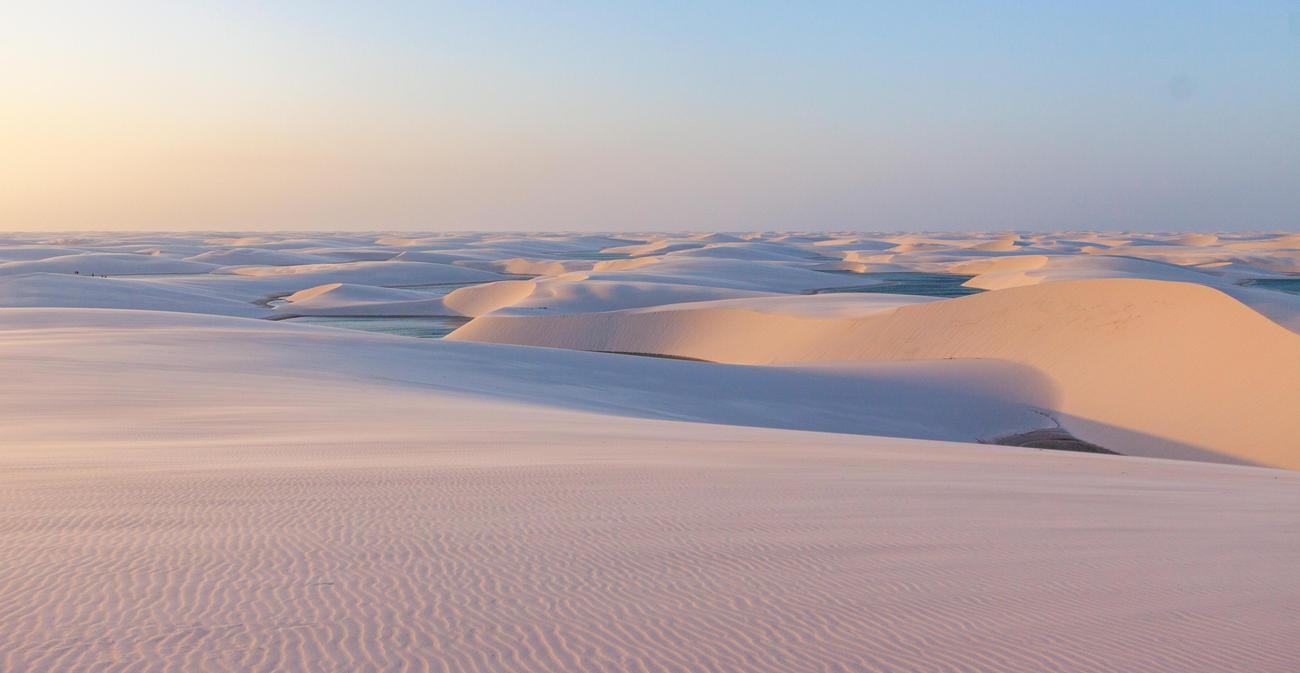
FAQ
Q: How old is the Namib Desert?
A: The Namib Desert is estimated to be between 55 and 80 million years old, making it the oldest desert in the world.
Q: What makes the Namib Desert unique?
A: The Namib Desert is known for its large sand dunes, including some of the largest in the world. It is also characterized by its thick fog that rolls in from the Atlantic Ocean, providing water for the plants and animals that inhabit the area.
Q: What is the significance of the “fairy circles” in the Namib Desert?
A: “Fairy circles” are barren patches of land in the Namib Desert that still remain a mystery to scientists. The reason behind their formation is still unknown.
Q: Are there any threats to the conservation of the Namib Desert?
A: Yes, the Namib Desert is currently facing environmental threats and territorial disputes, which pose challenges for its conservation and preservation.
Q: Where is the Dragon’s Breath Cave located and why is it significant?
A: Dragon’s Breath Cave is located in the Otjozondjupa Region of Namibia, 46 kilometers northwest of Grootfontein. It is home to the largest underground non-subglacial lake in the world and is considered a unique and significant natural wonder.
- Unveiling the Enigma: Mansoureh Khojasteh Bagherzadeh’s Public Appearances & Private Life in Iran - July 18, 2025
- Unveiling the Mystery: Mansoureh Khojasteh Bagherzadeh’s Husband: A Rare Glimpse into a Private Life - July 18, 2025
- Unveiling Masoud Khamenei’s Mother: Power, Influence, and Iran’s Future - July 18, 2025
